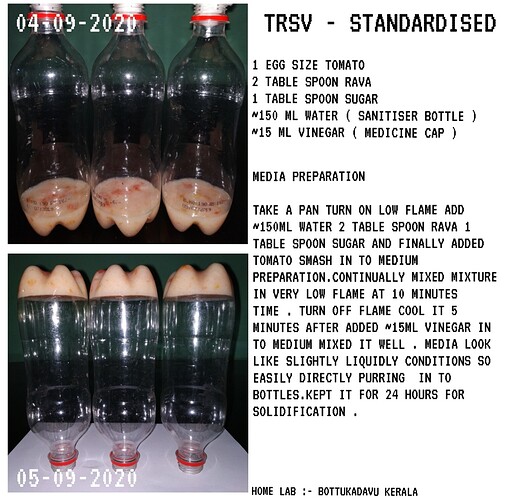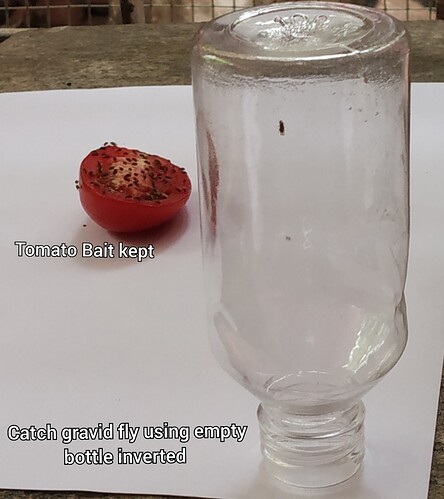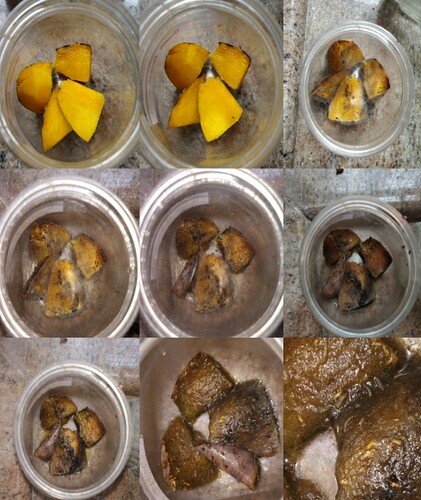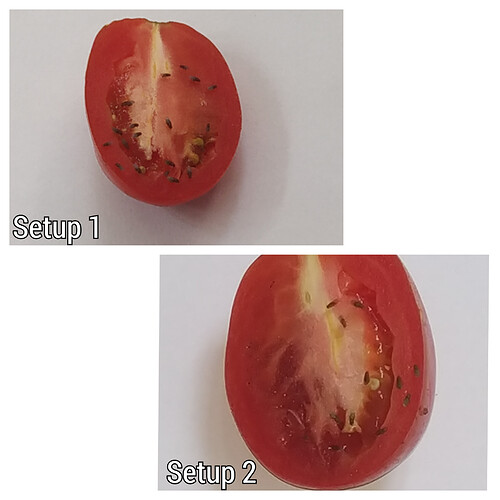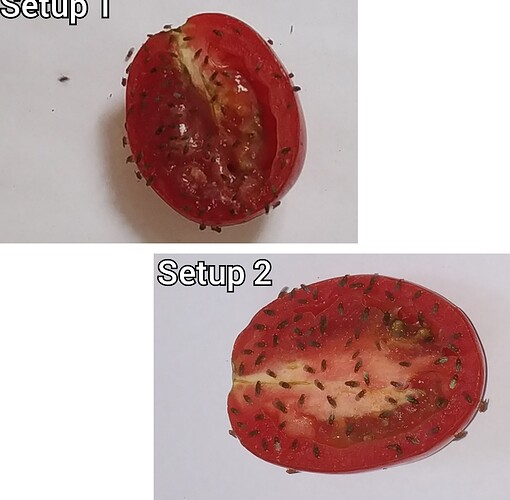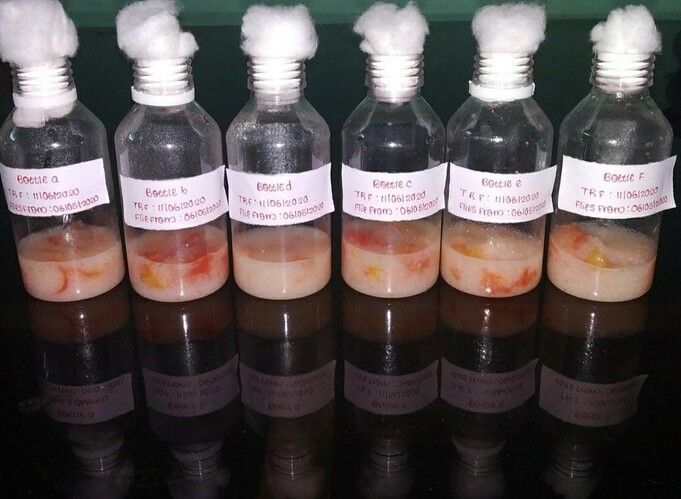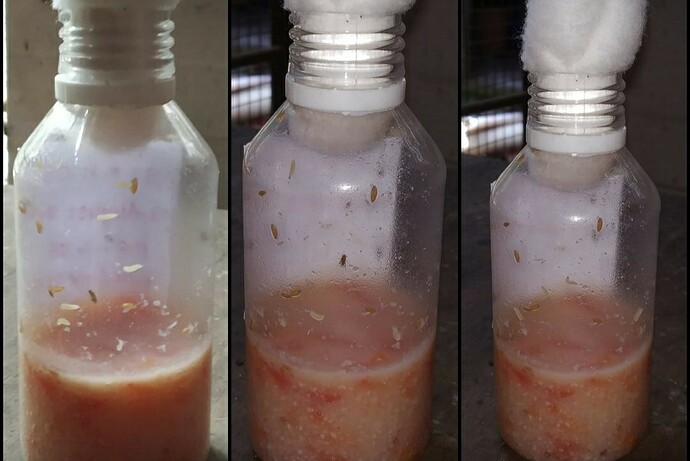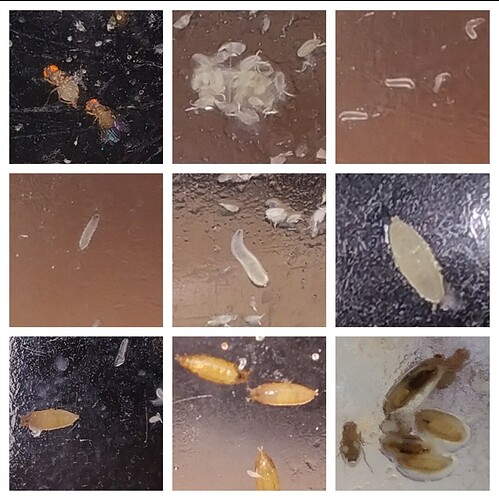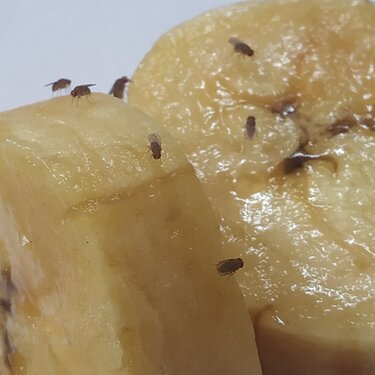SINGLE LINE CULTURES
Cube Home Lab - Bottukadavu Thrissur Kerala.
SLBK A
Single Line Bottukadavu Kerala
Mother : A fly
Single line culture started on : 26/05/2020
Stock culture (e.g) : A10 (maintain A species flies in stock culture bottles, that will help us to keep that fly progeny’s without loosing)
Stock culture made on : 13/12/2020
Media : TRSV, made on : 12/12/2020
A Progeny’s : ~70 more flies.
Larvae : ~50 larvae.
Pupae : ~100 hatched & un hatched pupae.
Dead flies : ~40 more
SLBK A10 is shows a healthy bottle  .
.
31 Days old culture bottle
Video taken : 14/01/2021
Video captured by : @saswathy679 
SLBK B
Single Line Bottukadavu Kerala
Mother : B fly
Single line culture started on : 26/05/2020
Stock culture (e.g) : B10 (maintain B species flies in stock culture bottles, that will help us to keep that fly progeny’s without loosing)
Stock culture made on : 13/12/2020
Media : TRSV, made on : 12/12/2020
A Progeny’s : ~100 more flies.
Larvae : ~80 larvae.
Pupae : ~100 hatched & un hatched pupae.
Dead flies : ~50 more
SLBK B10 is shows a healthy bottle  .
.
41 Days old culture bottle
Video taken : 23/01/2021
Video captured by : @saswathy679 
SLBK C
Single Line Bottukadavu Kerala
Mother : C fly
Single line culture started on : 11/06/2020
Stock culture (e.g) : C10 (maintain C species flies in stock culture bottles, that will help us to keep that fly progeny’s without loosing)
Stock culture made on : 13/12/2020
Media : TRSV, made on : 12/12/2020
A Progeny’s : ~90 more flies.
Larvae : ~60 larvae.
Pupae : ~90 hatched & un hatched pupae.
Dead flies : ~30 more
SLBK C10 is shows a healthy bottle  .
.
41 Days old culture bottle
Video taken : 23/01/2021
Video captured by : @saswathy679 
SLBK E
Single Line Bottukadavu Kerala
Mother : E fly
Single line culture started on : 20/08/2020
Stock culture (e.g) : E10 (maintain E species flies in stock culture bottles, that will help us to keep that fly progeny’s without loosing)
Stock culture made on : 13/12/2020
Media : TRSV, made on : 12/12/2020
A Progeny’s : ~80 more flies.
Larvae : ~60 larvae.
Pupae : ~100 hatched & unhatched pupae.
Dead flies : ~30 more
SLBK E10 is shows a healthy bottle  .
.
41 Days old culture bottle
Video taken : 23/01/2021
Video captured by : @saswathy679 
